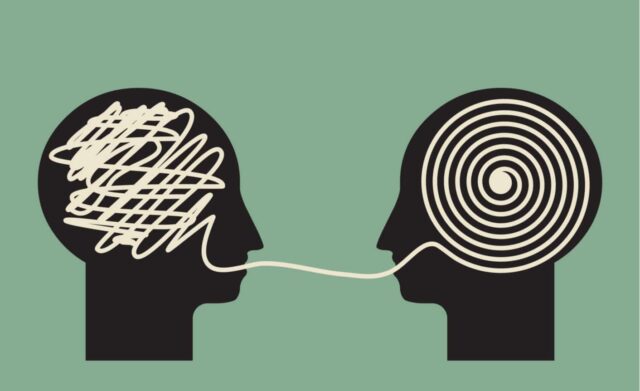
Corporate jargon is the secret handshake of office life. It’s like trying to decode a foreign language where “touch base” doesn’t involve sports, and “circle back” doesn’t involve any actual circles. While it might sound cool in meetings, it often leaves everyone else scratching their heads.
If you’re nodding along, chances are you’ve been both the victim and perpetrator of corporate lingo. But don’t worry. Today, we’re breaking it down into plain, simple words. By the end, you’ll feel confident turning that fancy talk into language anyone can get behind.
Key Points:
- Simplifying corporate language improves communication.
- Use relatable analogies to explain complex terms.
- Avoid overloading your content with jargon to maintain clarity.
- Match the tone to your audience.
- Replace buzzwords with clear, direct phrasing.
Why Does Corporate Jargon Exist?

Corporate jargon thrives because it creates an “insider” culture. When used sparingly, it can save time or explain concepts succinctly. But when overused, it alienates. Suddenly, a clear idea becomes an opaque wall of buzzwords.
Words like “synergy” or “paradigm shift” can sound impressive but usually need translating. For situations where jargon gets in the way of real connection, a corporate speak translator might just be what you need to cut through the clutter.
Step 1: Identify the Biggest Offenders
Before fixing the problem, you have to spot it. Start by listing phrases you hear often but don’t fully understand. Here are some repeat offenders:
- “Leverage our assets” – Just say, “Use what we’ve got.”
- “Move the needle” – Try, “Make progress.”
- “Scalable solutions” – Translate to, “Easily expanded.”
- “Low-hanging fruit” – How about, “The easy stuff?”
- “Actionable insights” – Simply, “Useful ideas.”
Every team and industry has its own lingo, so tailor this to fit your workplace.
Step 2: Swap Big Words for Short Ones
Short words are your best friends when keeping it simple. Consider this transformation:
- Original: “We need to synergize our frameworks to optimize cross-functional workflows.”
- Simplified: “Let’s work together to make things run smoother.”
When in doubt, imagine explaining the concept to a teenager. If they get it, you’re golden.
Tips for Ditching Buzzwords
Buzzwords often feel like filler. Here’s how to eliminate them:
- Ask “What does it actually mean?” – If you can’t answer, rephrase.
- Think about your audience. – Would they understand?
- Prioritize action over fluff. – Skip abstract concepts and focus on specifics.
Step 3: Match Tone to Audience

Not every audience will appreciate the same style of communication. A tech-savvy team might enjoy light technical terms, while customers just want straightforward messaging. Matching tone to audience ensures everyone feels included.
For instance:
- Jargon-heavy: “Our cloud-based platform enhances data integration.”
- Simplified for customers: “Our software helps your apps work together.”
Make It Relatable with Analogies
Complex ideas often become clearer with analogies. Take a concept like “synergy.” Instead of throwing it around, try explaining it like this:
“It’s like two puzzle pieces. They fit together perfectly to create a bigger picture.”
Analogies make tough topics feel approachable. Just don’t overdo it.
Corporate Emails: The Breeding Ground of Jargon
Emails are a notorious hotspot for complicated language. Try a simple approach:
- Write like you speak. – Use conversational phrasing.
- Get to the point. – Lead with the purpose of the email.
- Be clear about next steps. – Tell readers exactly what’s expected.
Example:
Instead of: “Let’s align our deliverables for the upcoming quarter.”
Say: “Let’s plan the work for next quarter.”
Use Visuals to Simplify Complex Ideas

Sometimes words just aren’t enough. Visual aids like charts, infographics, or diagrams can break down tricky concepts faster than paragraphs of text. For example, instead of explaining a workflow with sentences, map it out step by step.
When designing visuals:
- Keep them clean and uncluttered.
- Use clear labels instead of technical jargon.
- Match the style to the audience (professional for clients, casual for internal use).
Example: A timeline graphic showing a project’s phases can make “streamlining the process” feel like a simple journey instead of a corporate maze.
Create a Jargon-Free Culture
Encouraging your team to use clear language benefits everyone. Lead by example and offer constructive feedback. For recurring issues, build a cheat sheet of plain-language alternatives. Soon, clarity will become the norm.
Keep Testing and Refining Your Approach

No one gets it right on the first try. Keep refining how you communicate by seeking feedback from your audience. Ask if your explanation made sense. If people still seem confused, tweak your wording or approach.
Steps to test your communication:
- Share your simplified version with a colleague.
- Observe how well they understand without further explanation.
- Adjust based on their feedback.
It’s like debugging a computer program—find the glitches and fix them. The more you practice, the sharper your skills become. Simple language is a habit worth building.
Frequently Asked Questions
- Why is simple language better for corporate communication?
Simple language makes messages easier to understand, saving time and reducing confusion.
- What’s the best way to start using less jargon?
Focus on explaining concepts clearly without trying to impress anyone.
- How do you get coworkers to stop using buzzwords?
Offer alternatives in a non-judgmental way. Lead by using clear language yourself.
- When is it okay to use jargon?
Use jargon only when your audience is familiar with it and it serves a purpose.
- Can I make jokes or keep a casual tone in professional settings?
Absolutely, as long as it fits the audience and doesn’t detract from the message.
Wrapping Up
Corporate jargon doesn’t have to rule the workplace. By breaking ideas into bite-sized, clear explanations, you make it easier for everyone to connect and collaborate.
So, the next time you hear someone say, “Let’s pivot and drill down on our key takeaways,” feel free to translate it. Plain words are powerful. And hey, isn’t that the whole point?









